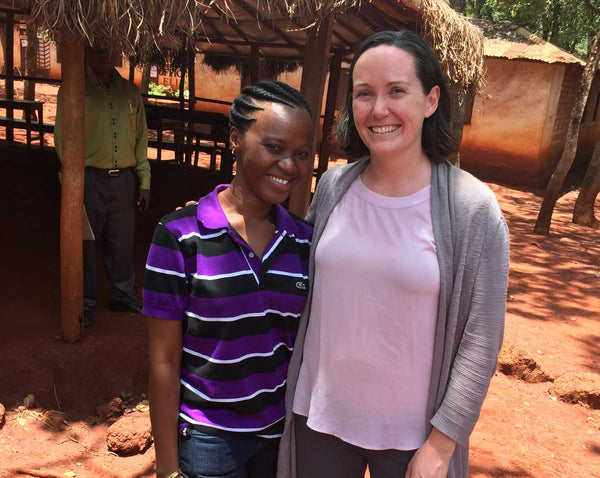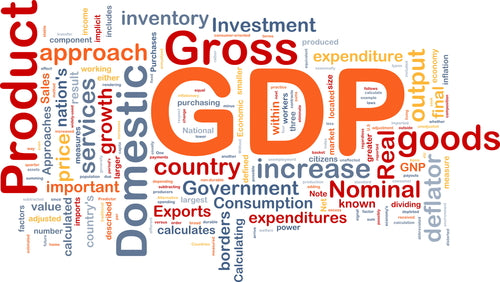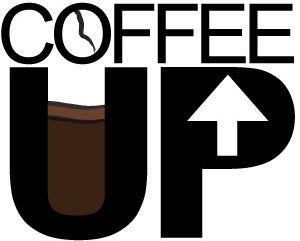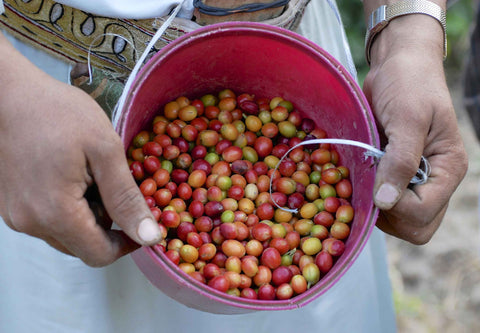This post is Part 3 of a five-part series on measuring Al Mokha's impact in Yemen. (Links to Part 1 & Part 2)
As a development economist with interests that are a little outside the norm, I spend a lot of my day thinking about how to measure unmeasurable things. How prevalent is a certain belief? And how does it affect people’s behavior? Can one violent event, or experience, be objectively seen as worse or more violent than another? And if so, what determines that violence—scope, tenor, frequency? How do we fix it?
So, when Anda told me he wanted to start thinking more about impact and measurement at Al Mokha, I jumped up and down with glee. From the moment he and I first talked development and coffee in Cambridge almost a year ago, I’d been questioning, "cool, but how do you measure that?"

Author (on right) in Nyarugusu, Tanzania, during a project for the International Rescue Committee
As an aside, when I tell someone I’m an economist, there are a few common tropes that people immediately fall back on. There’s often an immediate question of whether I can do their taxes (I could probably hack it, but you’re better off with a CPA) or help them pick stocks (I am the last person you want doing that).
And then there’s the belief that I must work with GDP and trade or exchange rates.
I don’t do any of those things, but I do think that GDP is a great place to start thinking about measuring Al Mokha’s impact. Al Mokha doesn’t want to just sell coffee; it wants to fundamentally change Yemen’s economy by revitalizing a sector that has been decimated. And if you can revitalize a sector that at one point dominated an economy, you should be able to see change at the GDP-level.

GDP is deceptively simple. When you hear about it on the news, GDP is a single number, maybe a few numbers if someone talks about year-over-year growth and growth in a particular quarter, but usually just one number. That number, however, is made up of literally thousands of numbers, of transactions between people and firms and countries and governments. In many countries, as in the US, there is an entire government agency devoted simply to measuring GDP, to making the rules about what counts in GDP and what doesn’t.
Yemen has been seriously suffering in the GDP department. According to the Yemeni Ministry of Planning, Yemen’s GDP is projected to shrink by almost 35% in 2016. Compare that to a paltry 1% shrinkage seen during the Global 2008 Recession in the US.
If the (or one) goal is to grow Yemen’s economy rather than to shrink it, what would it take to increase Yemen’s GDP via coffee? The most straightforward way would be to increase the size of the coffee sector. Economists like to think about questions like this as changing extensive or intensive margins. The extensive margin would be to increase the number of acres planted. But we can increase the size of the coffee sector without planting one more coffee plant, if the price of coffee beans from Yemen simply goes up, or yields are higher due to better fertilizer use or some other factor (the intensive margin).

So, we started by asking a simple question, how do we raise GDP? And with one logical step, we already have four or five different outcomes we could try to measure (either separately or in tandem with GDP):
And inside each one of those is also a list of measurable outcomes. For instance, do higher coffee prices lead to higher incomes for farmers? Or middlemen? And which is desirable (or is it both)? We went from one seemingly simple number to lots of measurable outcomes. Al Mokha is trying to figure out which ones it cares about.

Finally, we also have to think about what may come out of this project that isn’t so good. “Unintended consequences” is kind of a loaded term right now if you’re following elections in the United States, but economists use the term a lot. We also call them externalities. While Al Mokha’s goals are to promote economic growth and diminish the appeal of violent insurgency, some may see pumping money into a failing state as foolish. It’s possible that any extra income going to farmers could be siphoned off by insurgent groups. Or that kids will be taken out of school to work in the fields. Or that creating demand for coffee will reduce agricultural space devoted to food, which is problematic in a country that is considered extremely food insecure by the World Food Program.
Some of the above are measurable, albeit with a lot of effort. We can examine what (little) data is coming out of Yemen from the government and international organizations. We can poll farmers who are supplying coffee about how much they are planting and earning. We can add up all the coffee production in the country and show how it changes year over year, and from there do a little back-of-the-envelope calculation on GDP change. We could show how higher prices of coffee offset negative welfare impacts (ala this paper on Quinoa in Peru by Bellemare, et. al.). Not that any of these is particularly easy in practice, but there’s at least a path to understanding them.

Furthermore, lots of outcomes Al Mokha hopes to achieve are not measureable. I’m going to save that for my next post, the nebulous and qualitative, and leave you with this: deciding what to measure and how to measure it is an ongoing process. GDP is a great place to start. It is a number that is widely recognized as a measure of economic success, and an area that is visibly and severely suffering in Yemen right now. GDP-level change is the kind of change we're hoping to accomplish.
So what does a change in GDP actually look like? I did a quick back-of-the-envelope calculation: doubling Yemen’s current coffee production (of 19,800 tons in 2013) will increase GDP somewhere between 0.30 and 3.73 percent. That may sound small, but it's not. That's $109 million - $1.3 billion (calculation below).
It's clear there's huge potential to increasing coffee production at an economy-wide level and big picture, we're focused on that. But there's all those components, too. We're going to keep digging down, into yields and acres planted, into where the money ends up and how it is spent, and into how it changes outcomes for families. We believe that impact is important. Al Mokha is trying to sell coffee, but with a purpose, and a seemingly simple goal to sell coffee will have many disparate impacts all over the economy, from the very biggest measurement, to the smallest.
Calculation, for those nerdy enough to care: First, note that good numbers from recent years are hard to come by, so these are estimates, but they do leave us with answers that are generally on the same order of magnitude. If coffee production is 19,800 tons (2,200 pounds a ton, 2013 estimate from the Yemen Ministry of Agriculture), and farmers receive $2.50 per pound, doubling production would mean an extra $109 million in the economy, which is about 0.30% of 2013 GDP estimate of $35 billion (World Bank). However, GDP only counts finished goods, so if we take the US consumer price of Al Mokha coffee, at $30/pound, you end up with an extra $1.3 billion in the economy, a 3.73 percent change.
The reality is probably somewhere in the middle in terms of what would get counted in Yemen’s GDP as it is unlikely that farm-gate green coffee prices or U.S. consumer prices are the relevant metric. Also, beans are priced differently according to quality with ultimate benefits to farmers and Yemen depending on how much value-add is done in-country and how much is exported. But even lower estimates of prices and current production yield effects on the same order of magnitude. If we assume exporters are getting $6/lb., that yields $261 million for a 0.75% increase in GDP.
Those interested in trying Al Mokha's coffee can shop at www.almokha.com
Erin is Al Mokha's Board Advisor in developmental economics. She has no financial interests in Al Mokha and has received no compensation for this post.
by Anda Greeney
If you’ve been hanging out with us at Al Mokha for some time, you know that "Mocha" or "Mokha" means coffee from Yemen. And you’ve heard the story before: coffee cultivation started in Yemen circa 1450 and shipped from the port city of Al Mokha; and that’s how place name became synonymous with product.
Similarly, if you scratch your head a moment, you may think, hmm…maybe "java" literally means coffee from the Indonesian island of Java. And you’d be right.
Not only that, but you would be putting your finger on the “world’s second coffee™”. In about 1699, the Dutch East India Company began cultivating and exporting coffee from Java. This new origin ended Yemen's 250-year monopoly.
So there you go, and it’s pretty obvious how you would end up with a blend. Take Mokha + Java—i.e. world’s first and second coffee—and voila, "Mocha-Java," the World’s First Blend™. This is hardly a complex mathematical equation.
by Erin Fletcher
In my last post, I talked about numbers, about progress and about impact we could measure at Al Mokha. Economists tend to get wrapped up in numbers. This group of people is richer, you might say, and an economist wants to know, okay, but how do measure “rich”? Is it how much money or how many assets they have; is it how much they earn? How do you get a representative sample to answer your questions? How do you know that someone’s observable (or unobservable) characteristics aren’t influencing the way they perceive the question?
Economists have largely settled these questions. With a little effort, you could get to a point where you could measure “rich” satisfactorily, where you could answer the question of who is richest.
But some questions are simply unanswerable within the paradigm of statistical causality. Some of those questions are ones that Al Mokha wants to answer.
For instance, is coffee the best answer to Yemen’s woes?
by Erin Fletcher
In Part I, Anda wrote about the perils of trying to be a salesperson / academic, and how that duality plays out in the business: investors want to see sales growth whereas economists (me!) want to see real, measureable change in things like poverty levels, in coffee production, in anything we can quantify with data.
So we're working towards that. In this post, Part 2, I introduce myself and in parts III- V we tackle some tough questions.
Well, who am I? If you're here frequently you know Anda and you've heard mention of some of his advisors (as he spins tales of sinking all his time into a startup). I'm the nerdy PhD obsessed with data and development. I have a doctoral degree in economics. I spend most of my time reading and writing papers on violence against women and children and female labor force participation. In the headline photo that's me doing research for the IRC in Nyarugusu, Tanzania. Basically, I spend a lot of time thinking about very economist-y things like incentives.
Erin Fletcher
Author